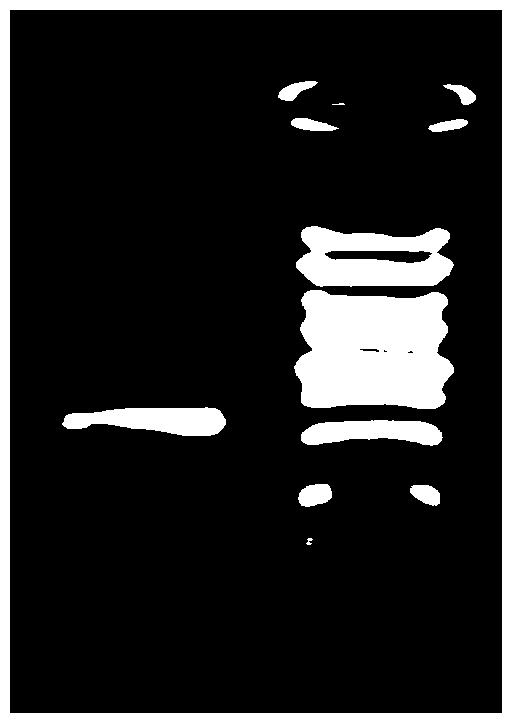Fungus with straw degradation capability and application thereof in composting
A straw and fungus technology, applied in the fields of application, fungi, organic fertilizers, etc., can solve the problems of inability to degrade pectin and hemicellulose components, achieve good application value, accelerate degradation speed, and increase organic matter content.
- Summary
- Abstract
- Description
- Claims
- Application Information
AI Technical Summary
Problems solved by technology
Method used
Image
Examples
Embodiment 1
[0023] Isolation, purification and preservation of strains
[0024] The rotten straw and soil of the paddy field of Pujiang Base of Jiaotong University, Pujiang Town, Minhang District, Shanghai were taken as samples. Shake flask enrichment culture was adopted, and 10 g of different samples were ground and mixed, placed in 100 mL enrichment medium, and incubated at 30°C and 150 rpm. Every 5 days, 10% of the inoculum was transferred to another enriched medium, and the acclimatization was repeated 4 times. The enrichment medium adopts the medium with CMC-Na as the sole carbon source.
[0025] Take 100 μL of the enrichment solution and spread it on the CMC-Congo red medium plate, place it in a constant temperature and humidity incubator at 28°C and culture it upside down, and observe after 5 days. Pick the bacteria with a larger diameter of the hydrolysis circle and inoculate them on the PDA medium until a single colony is obtained. Then the single bacterium colony obtained is ...
Embodiment 2
[0028] Identification of Penicillium oxalicum strains
[0029] Combined with physiological and biochemical identification and 18S rDNA ITS sequence comparison analysis ( figure 2 shown), the bacterium was identified as Penicillium oxalicum, and the taxonomic species name was Penicillium oxalicum.
[0030] The strain was named JSD-17, and it was preserved in the General Microbiology Center (CGMCC) of the China Committee for the Collection of Microbial Cultures (CGMCC) on June 19, 2013. Address: No. 3, Yard 1, Beichen West Road, Chaoyang District, Beijing, China Science Microbiology Research Institute, the deposit number is CGMCC No.7743.
Embodiment 3
[0032] Determination of Enzyme Production Activity of Penicillium oxalicum
[0033] Using the DNS method, the activities of the two cellulase CMCase and FPase in the optimized fermentation broth were determined to be 72.69U / mL and 40.55U / mL respectively; the activities of pectinase and xylanase were determined to be 5.86U / mL and 3.26U / mL. U / mL. Wherein, one enzyme activity unit (U) is the amount of enzyme that generates 1 μg of monosaccharide product per milliliter of enzyme liquid catalyzed reactants per minute.
[0034] ABTS, veratrol, Mn 2+ As the reaction substrate, the activities of laccase (Lac), lignin peroxidase (Lip) and manganese peroxidase (Mnp) in the fermentation broth were determined by spectrophotometry. The activities of the three enzymes were determined to be 15.8U / L, 1.94U / L, and 5.54U / L, respectively. It is defined here that 1 μmol of substrates (ABTS, veratrol, Mn 2+ ) is an enzyme activity unit (U).
PUM
 Login to View More
Login to View More Abstract
Description
Claims
Application Information
 Login to View More
Login to View More - R&D
- Intellectual Property
- Life Sciences
- Materials
- Tech Scout
- Unparalleled Data Quality
- Higher Quality Content
- 60% Fewer Hallucinations
Browse by: Latest US Patents, China's latest patents, Technical Efficacy Thesaurus, Application Domain, Technology Topic, Popular Technical Reports.
© 2025 PatSnap. All rights reserved.Legal|Privacy policy|Modern Slavery Act Transparency Statement|Sitemap|About US| Contact US: help@patsnap.com


